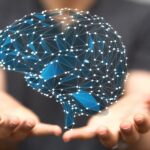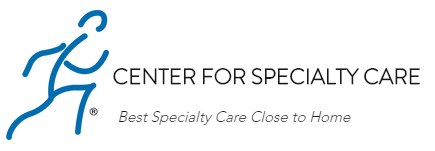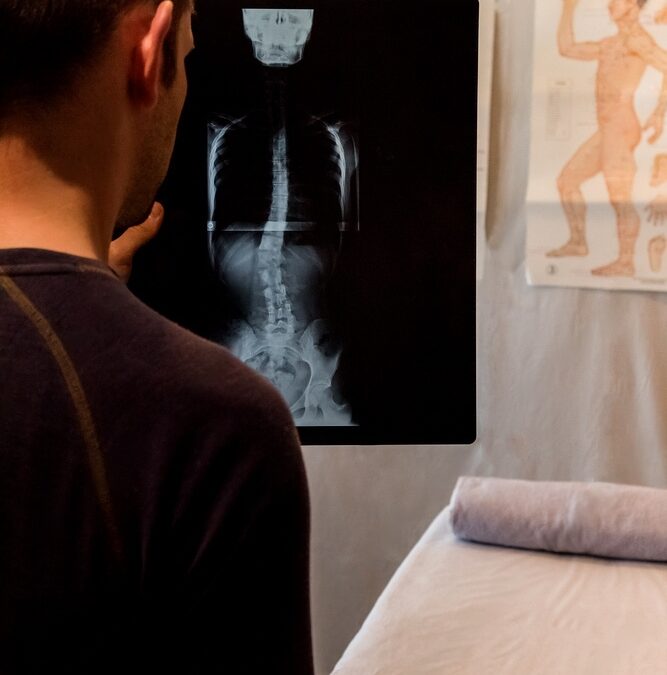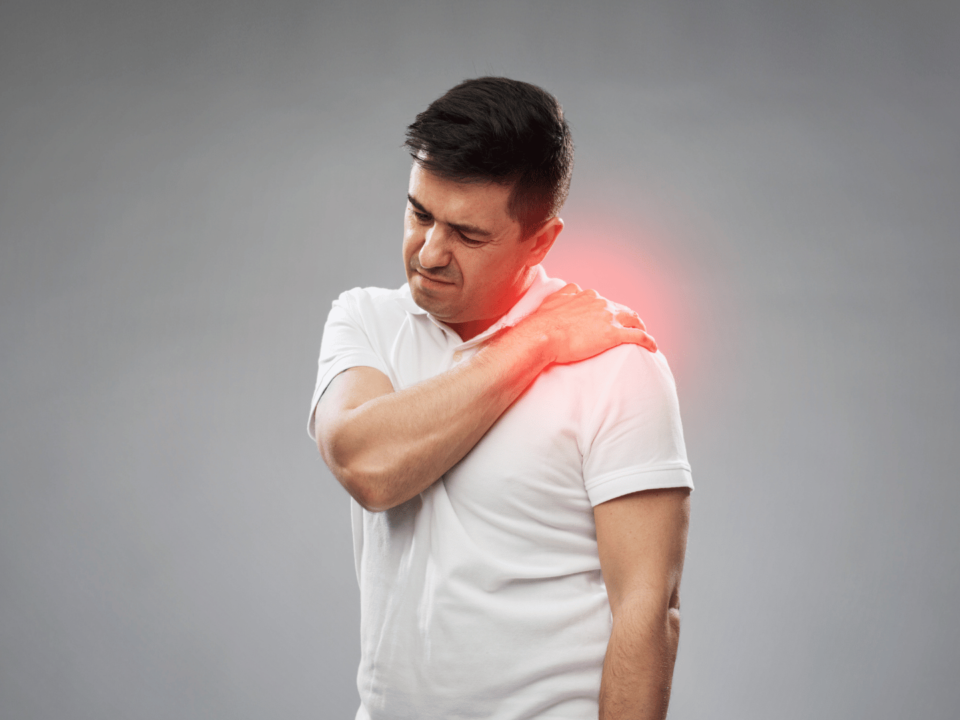
Spinal Anatomy in Sports: Strategies to Prevent Injuries and Enhance Performance
September 14, 2023
Guardians of the Nervous System: How the Spinal Column Protects the Cord
September 14, 2023Spinal conditions can cause significant discomfort and impact daily life. Understanding these conditions, their causes, symptoms, and treatment options is crucial for maintaining spinal health. In this article, we will explore common spinal conditions, their causes, and the symptoms associated with them. We will also discuss available treatment options to help individuals manage these conditions effectively.
Understanding Spinal Conditions
What are spinal conditions? These conditions refer to various problems that affect the spinal column and the structures surrounding it. The spine consists of bones (vertebrae), discs, nerves, ligaments, and muscles, all of which work together to support the body’s structure and facilitate movement.
Spinal conditions can have a significant impact on a person’s quality of life. They can cause pain, discomfort, and limitations in mobility. It is important to understand the different types of spinal conditions and their effects in order to seek appropriate treatment and management.
What are Spinal Conditions?
Spinal conditions encompass a wide range of issues that can arise within the spine. These conditions can develop due to trauma, aging, or other factors. They can affect the cervical (neck), thoracic (mid-back), or lumbar (lower back) regions of the spine.
One common spinal condition is herniated discs. This occurs when the soft cushion-like discs between the vertebrae become damaged or ruptured, causing the inner gel-like material to leak out and put pressure on nearby nerves. This can result in pain, numbness, and weakness in the affected area.
Another spinal condition is spinal stenosis, which is the narrowing of the spinal canal. This narrowing can compress the spinal cord and nerves, leading to symptoms such as pain, tingling, and difficulty walking. Spinal stenosis is often caused by age-related degeneration of the spine.
Scoliosis is a spinal condition characterized by an abnormal sideways curvature of the spine. It can develop during childhood or adolescence and can cause uneven shoulders, a tilted waist, and an asymmetrical appearance. Severe cases of scoliosis may require treatment with braces or surgery.
The Importance of Spinal Health
A healthy spine is essential for overall well-being. It provides structural support, protects the spinal cord and nerves, and allows for fluid movement. When spinal conditions occur, they can disrupt these functions and lead to pain, limited mobility, and other complications.
Proper posture and body mechanics play a crucial role in maintaining spinal health. Slouching, excessive sitting, and improper lifting techniques can put strain on the spine and increase the risk of developing spinal conditions. Regular exercise, stretching, and maintaining a healthy weight can also help support a healthy spine.
It is important to seek medical attention if you experience persistent back pain or any other symptoms that may indicate a spinal condition. Early diagnosis and treatment can help prevent further damage and improve outcomes. Treatment options for spinal conditions may include physical therapy, medication, injections, or in some cases, surgery.
In conclusion, understanding spinal conditions is vital for maintaining spinal health and overall well-being. By being aware of the different types of spinal conditions and their effects, individuals can take proactive steps to prevent and manage these conditions, ensuring a healthier and more active lifestyle.
If you or a loved one are experiencing symptoms of a common spinal condition, don’t wait. Reach out to Dr. Welchlin and his expert team at Center for Specialty Care for a comprehensive evaluation. We’re here to diagnose, educate, and guide you toward the best treatment options for your specific needs.
Identifying Common Spinal Conditions
When it comes to spinal health, there are several common conditions that individuals may experience. These conditions can range from mild discomfort to severe pain and can greatly impact a person’s quality of life. Let’s explore some of these conditions in more detail:
Herniated Discs
A herniated disc, also known as a slipped disc or ruptured disc, occurs when the soft inner material of a spinal disc leaks through a tear in the outer layer. This condition can result in nerve compression, leading to pain, numbness, and weakness in the affected area. Herniated discs commonly occur in the lower back and neck regions.
Imagine a rubbery disc acting as a cushion between the vertebrae of your spine. Now, picture that disc developing a tear, causing the inner material to leak out. This can put pressure on nearby nerves, causing a variety of symptoms. The pain can range from a dull ache to a sharp, shooting sensation, and it may radiate down the arms or legs, depending on the location of the herniated disc.
Treatment for herniated discs can vary depending on the severity of the condition. It may include rest, physical therapy, medication, or in severe cases, surgery. By identifying the symptoms early on and seeking appropriate medical attention, individuals can effectively manage their herniated discs and minimize the impact on their daily lives.
Spinal Stenosis
Spinal stenosis refers to the narrowing of the spinal canal, which puts pressure on the spinal cord and nerves. This can cause symptoms such as pain, cramping, and difficulty walking. The narrowing can occur in different areas of the spine, including the neck (cervical stenosis) or the lower back (lumbar stenosis).
Imagine your spinal canal as a tunnel that houses your spinal cord and nerves. Now, envision that tunnel gradually becoming narrower, squeezing the delicate structures within. This compression can lead to a variety of symptoms, including pain, tingling, and weakness in the affected areas.
Treatment for spinal stenosis may involve a combination of conservative measures, such as physical therapy, pain medication, and lifestyle modifications. In more severe cases, surgical intervention may be necessary to relieve the pressure on the spinal cord and nerves.
Degenerative Disc Disease
Degenerative disc disease is a condition characterized by the breakdown and degeneration of spinal discs over time. This can result in pain, stiffness, and reduced mobility. The discs act as shock absorbers between the vertebrae, and as they wear down, the spine becomes less flexible and more susceptible to injury.
Imagine your spinal discs as small, jelly-filled cushions that provide support and flexibility to your spine. Now, envision those cushions gradually losing their jelly-like substance, becoming thinner and less effective at their job. This degeneration can lead to chronic pain, limited range of motion, and even nerve impingement.
Treatment for degenerative disc disease focuses on managing symptoms and preventing further degeneration. This may involve physical therapy, pain medication, lifestyle modifications, and in some cases, surgery. By adopting a proactive approach to spinal health, individuals can slow down the progression of degenerative disc disease and maintain an active lifestyle.
Scoliosis
Scoliosis is an abnormal curvature of the spine that can develop during growth. It can cause an uneven appearance of the shoulders or hips and may result in back pain or limited mobility. This condition can range from mild to severe, and its impact on an individual’s daily life can vary accordingly.
Imagine your spine as a perfectly straight line from the back of your neck to your tailbone. Now, visualize that line curving sideways, resembling the shape of the letter “S” or “C.” This abnormal curvature can lead to a variety of symptoms, including back pain, muscle imbalances, and postural changes.
Treatment for scoliosis depends on several factors, including the severity of the curvature, the age of the individual, and the potential for further progression. Mild cases may only require monitoring, while more severe cases may necessitate bracing or surgery. Early detection and intervention are crucial in managing scoliosis effectively.
Understanding these common spinal conditions is essential for individuals to recognize the signs and symptoms and seek appropriate medical attention. By taking proactive steps to maintain spinal health, such as practicing good posture, engaging in regular exercise, and seeking professional advice when necessary, individuals can minimize the impact of these conditions and lead a healthy, active life.
Causes of Spinal Conditions
Spinal conditions can have various underlying causes. Understanding these causes can help individuals take preventive measures and reduce their risk of developing such conditions.
Genetic Factors
Genetics play a role in predisposing individuals to certain spinal conditions. In some cases, a person may have a family history of conditions such as scoliosis or degenerative disc disease, increasing their likelihood of developing the same condition.
Lifestyle Factors
Lifestyle choices can contribute to the development of spinal conditions. Factors such as poor posture, sedentary habits, obesity, and smoking can all increase the risk of developing problems with the spine.
Age-Related Factors
As we age, the spine naturally undergoes degenerative changes. Discs may lose moisture and become less flexible, leading to conditions such as degenerative disc disease and spinal stenosis. Age-related changes can also increase the risk of herniated discs.
Recognizing the Symptoms
Recognizing the symptoms of spinal conditions is important for early intervention and effective management. Here are some common symptoms associated with these conditions:
Pain and Discomfort
Pain is a common symptom of many spinal conditions. The intensity and location of the pain may vary depending on the specific condition. Individuals may experience localized pain, radiating pain down the arms or legs, or general discomfort in the back.
Mobility Issues
Spinal conditions can affect mobility, making it difficult to perform daily activities. Individuals may experience stiffness, limited range of motion, or difficulty walking because of pain or nerve compression.
Knowledge is key to managing spinal conditions. Join our patient community to access valuable resources and insights on common spinal conditions. Connect with Dr. Welchlin and the Center for Specialty Care team for the support you need on your journey to spinal health and well-being.
Neurological Symptoms
Some spinal conditions can cause neurological symptoms. These may include numbness, tingling, or muscle weakness in the arms, legs, or other areas of the body. In severe cases, spinal conditions can lead to bowel or bladder dysfunction.
Treatment Options
The treatment options for spinal conditions depend on the specific condition, its severity, and the individual’s overall health. Here are some common treatment approaches:
- Medication: Pain medications, anti-inflammatories, and muscle relaxants may be prescribed to manage pain and reduce inflammation.
- Physical Therapy: Physical therapy exercises and techniques can help strengthen the muscles supporting the spine, improve flexibility, and reduce pain.
- Injections: Epidural steroid injections or nerve blocks may be used to provide temporary pain relief by reducing inflammation and numbing the affected area.
- Surgery: In severe cases or when conservative treatments have not been effective, surgical intervention may be necessary to address the underlying issue and alleviate symptoms. Surgical options vary depending on the specific condition.
In conclusion, understanding common spinal conditions, their causes, and symptoms is crucial for maintaining spinal health. By recognizing the signs and seeking appropriate treatment, individuals can effectively manage these conditions and improve their quality of life. Remember to consult with a healthcare professional for an accurate diagnosis and personalized treatment plan.




